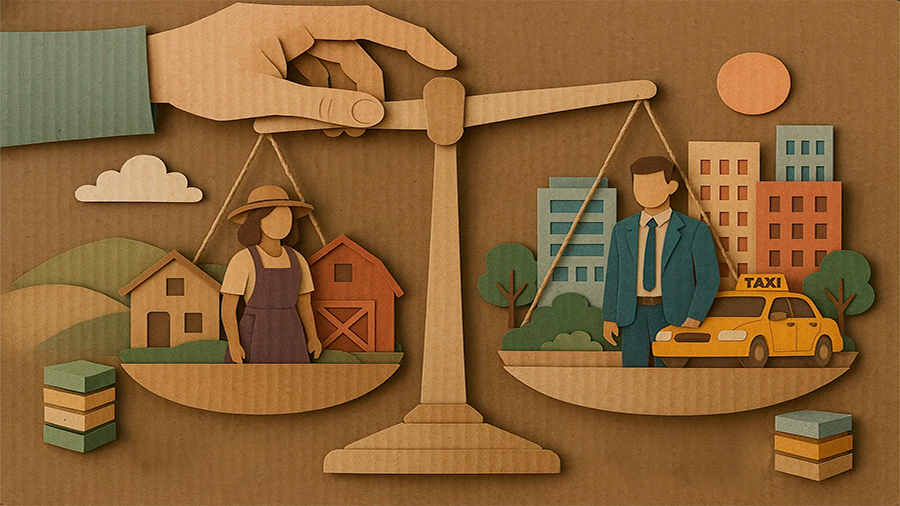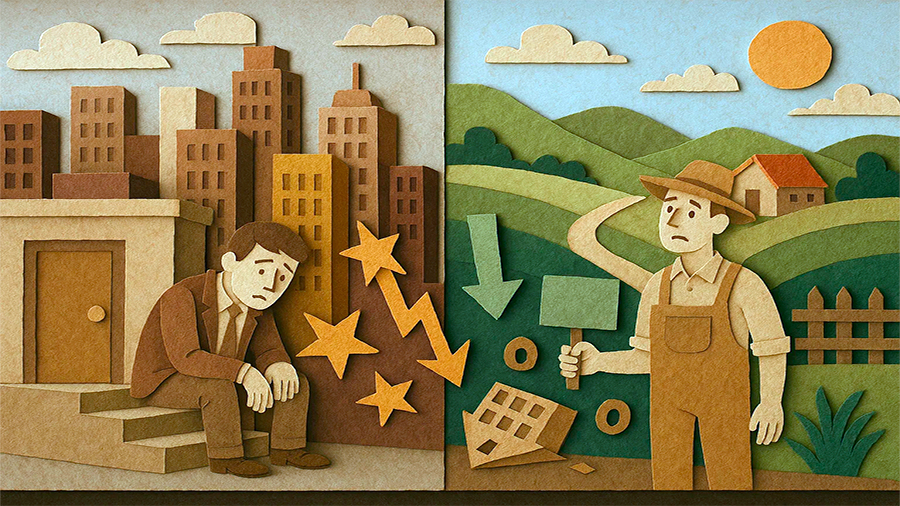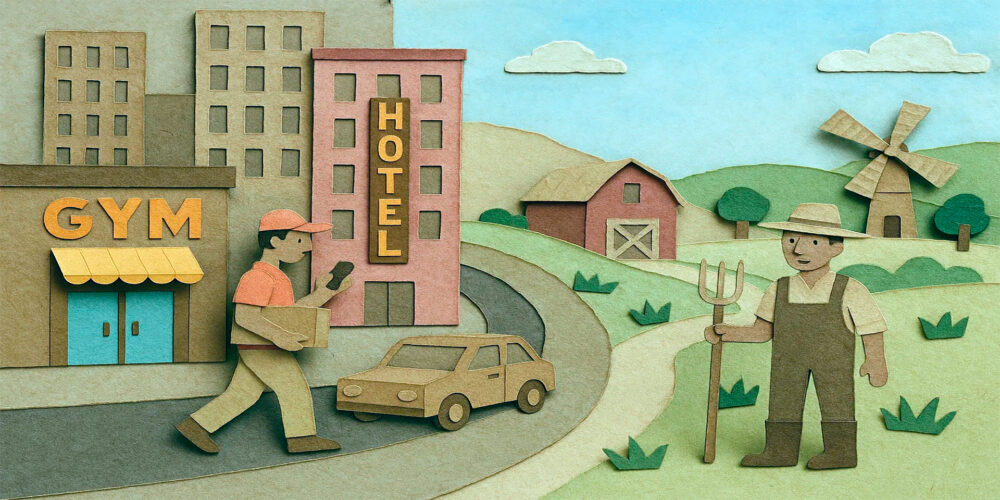Urban Vs. Rural: How Location Drives Service Market Imbalances
Walk through a big city and you’ll find every service you can imagine. Restaurants line the streets, gyms compete on every corner, and delivery apps fight for your attention. Travel a few hours into the countryside, and the picture changes completely. Services are fewer, competition is low, and choice often feels limited. This split between urban oversaturation and rural underutilization isn’t just about lifestyle differences. It reveals deeper structural imbalances in how economies distribute services. Location shapes access, pricing, and demand, creating two very different service worlds that rarely overlap.
Why Cities Attract Too Many Services
Urban areas act like magnets for businesses. High population density means more potential customers per square mile, making it easier for service providers to build scale. A coffee shop in the middle of a city may serve hundreds of people a day, while the same shop in a small town might struggle to fill tables. This logic drives investors, entrepreneurs, and franchises to concentrate in cities. But there’s a flip side. Too many similar providers chasing the same customers quickly leads to oversaturation. Margins thin, competition intensifies, and services lose profitability. Think of dozens of food delivery startups in the same market, all burning cash to outcompete each other. Urban oversaturation often looks like abundance for consumers but fragility for providers. Behind the variety, many businesses operate on razor-thin margins or close after a few years because the environment is simply too crowded.
The Pull Of Density
Cities make the numbers work. With so many people in one place, the logic of opening another café, gym, or salon seems obvious. The mistake comes when everyone makes the same calculation, forgetting that customers can only spread their spending so far.
Why Rural Areas Struggle To Attract Services
In rural areas, the opposite problem appears. Populations are smaller, distances are greater, and incomes can be more variable. A service provider that thrives in a city may not reach the same volume outside urban areas, making investment less appealing. Sparse populations create higher delivery and operational costs, especially for services that depend on quick turnover or foot traffic. The result is underutilization: too few providers serving too many needs. Healthcare deserts, limited financial services, and scarce educational facilities are examples of this imbalance. For rural residents, the lack of choice isn’t just inconvenient—it can mean traveling long distances for basic needs. This underutilization slows growth further, as communities without services struggle to retain young people or attract new investment.
The Challenge Of Scale
Where cities benefit from scale, rural areas suffer from the lack of it. A small town may want a gym, but if only a fraction of residents join, the math doesn’t work. Investors hesitate, and services never appear.

The Economic Consequences Of Imbalances
These urban-rural differences don’t exist in isolation. They shape economies at multiple levels. Oversaturation in cities can lead to wasted capital, where too many firms collapse after fierce competition. Rural underutilization, meanwhile, stifles opportunity by limiting consumer choice and business activity. Together, these patterns reflect inefficiency in the service economy. Urban areas burn through resources by duplicating services, while rural areas leave potential demand unmet. Governments and private firms both face dilemmas in addressing this. Concentrating on cities delivers short-term returns but deepens rural neglect. Trying to expand into rural areas often seems too risky financially. The gap between oversaturation and underutilization persists, creating uneven growth across regions.
Social Costs Of Imbalance
It’s not just about economics. Service imbalances shape quality of life. Urban dwellers face choice overload and instability, while rural communities cope with shortages that affect health, education, and mobility. The imbalance becomes a social issue as much as an economic one.
Examples Of Oversaturation And Underutilization
Take food delivery apps as an example. In large cities, customers can pick from dozens of platforms, often with discounts as companies battle for market share. Many of these platforms operate at a loss, unable to capture enough loyal users to survive. Contrast that with rural areas, where delivery options may not exist at all. A resident might need to drive 30 minutes just to pick up dinner. Healthcare shows a similar divide. Cities may have multiple clinics within walking distance, while rural regions rely on a single hospital covering hundreds of square miles. In both cases, efficiency is lost. Too many providers in one place waste capital, too few in another limit access. Both outcomes come from the same root cause: uneven service distribution tied to location.
Consumer Experience In Each Setting
For city residents, the challenge is navigating abundance. Too many options create decision fatigue, and low service quality can slip through because turnover is high. For rural residents, the challenge is the opposite: finding any service at all, regardless of quality.
Technology’s Attempt To Bridge The Divide
Digital tools are often promoted as solutions to urban-rural service gaps. Telemedicine, online learning, and e-commerce aim to deliver services across geography. While these reduce some barriers, they don’t erase them entirely. Internet connectivity remains uneven, and many services—like gyms, transportation, or restaurants—cannot be digitized fully. Still, technology plays an important role in reducing underutilization by bringing services to places where physical infrastructure is limited. On the flip side, technology in cities sometimes intensifies oversaturation. Platforms multiply options, but they don’t reduce competition among providers. In fact, they make it easier for new entrants to flood already crowded markets, adding pressure without solving imbalance.
The Limits Of Digital Fixes
While telehealth can reach a rural patient and food delivery apps expand choice in cities, technology doesn’t change the underlying economics of scale. Urban and rural differences still dictate how sustainable services can be.

Policy Approaches To Balance The Market
Governments face difficult choices in addressing service imbalances. Subsidies or tax incentives can encourage providers to enter rural areas, but long-term sustainability remains uncertain. For urban areas, regulation sometimes limits oversaturation—for example, capping the number of licenses for taxis or short-term rentals. Public investment in rural infrastructure, like better broadband or transportation, helps make services more viable. Still, the problem isn’t one of simple fixes. It’s about finding balance between places where demand overwhelms supply and places where demand exists but scale is lacking. Policies that acknowledge both sides of the imbalance have the best chance of narrowing the gap.
Encouraging Innovation
New models, such as mobile services or cooperative ownership structures, may help bridge the divide. For instance, mobile clinics in rural areas can reduce underutilization without requiring permanent facilities. Shared platforms in urban settings can reduce waste by consolidating oversaturated providers.
The Human Dimension Of Location
Beyond economics and policy, service imbalances affect how people live. Urban residents may enjoy variety but often complain about stress, noise, and the instability of businesses that come and go. Rural residents may appreciate stability and community but struggle with lack of access, forcing them to travel or go without. These experiences shape migration patterns, with people moving toward or away from certain regions depending on their service expectations. In turn, this migration reinforces the imbalance: cities become more saturated, rural areas more underserved. The cycle repeats itself, driven by choices that reflect the uneven geography of services.
Quality Of Life As A Measure
What counts as balance isn’t just economic output but whether people feel their needs are met. In cities, balance means fewer providers failing. In rural areas, balance means more providers arriving. Both require understanding location as the critical driver.
The Conclusion
Service market imbalances aren’t random—they follow the geography of population, infrastructure, and opportunity. Cities attract services to the point of oversaturation, creating abundance for consumers but fragility for businesses. Rural areas face the reverse problem, with underutilization and lack of choice limiting growth and quality of life. Technology and policy may soften these differences but cannot erase them entirely. The divide between urban and rural services reflects deeper economic patterns that require long-term solutions. Until then, where you live will continue to determine not only what services you can access but also how sustainable those services are in the long run.




 Daniel Reed is the founder and chief editor of MYA App. With more than 12 years of experience in finance, economics, and digital markets, Daniel brings a unique perspective to complex topics such as credit risks, global auctions, and investment strategies.
Daniel Reed is the founder and chief editor of MYA App. With more than 12 years of experience in finance, economics, and digital markets, Daniel brings a unique perspective to complex topics such as credit risks, global auctions, and investment strategies.